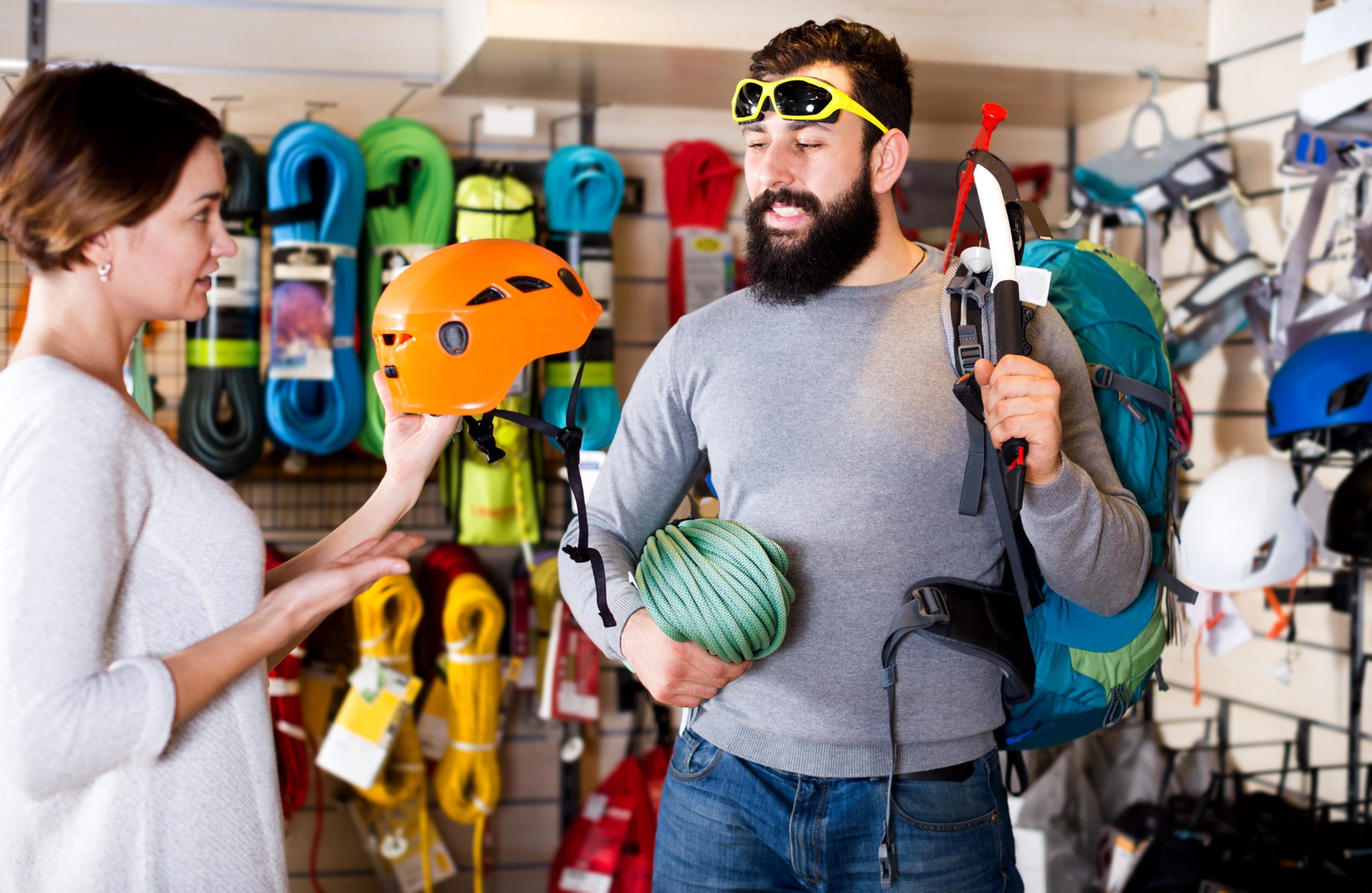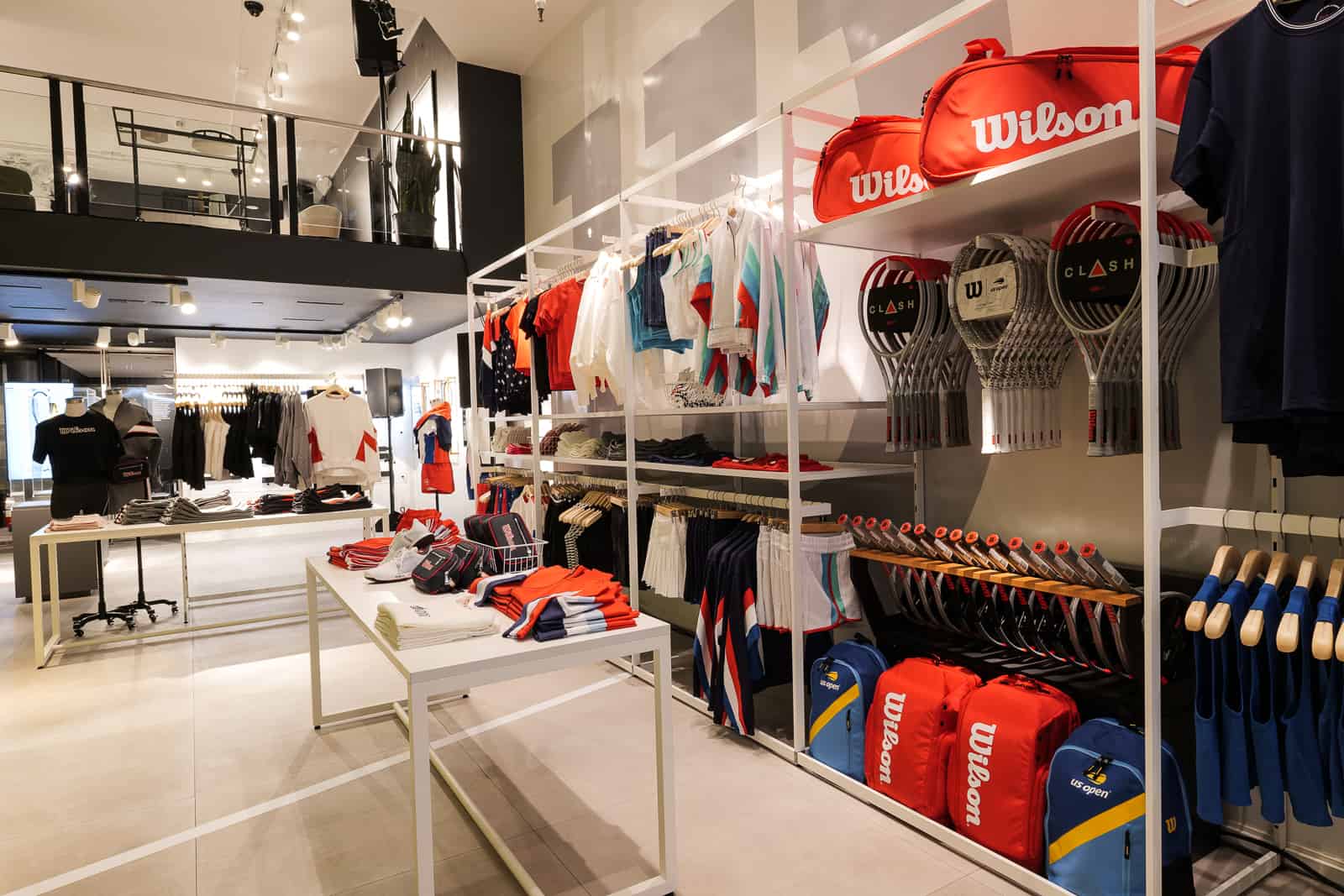People worldwide are getting more interested in outdoor adventures, such as hiking, fishing, and camping. For outdoor enthusiasts, it’s a time to escape from everyday life, enjoy some fresh air, and get a little exercise. Most outdoor activities necessitate special clothing and gear, which has recently contributed to impressive growth in the market presence and product offerings.
This comes with the opportunity for new local outdoor businesses. If you’re wondering how to start an outdoor store, this post will show you crucial planning steps with an estimated budget, the required experience and skills for your future business venture.
Why should you invest in an outdoor store?

Source: Astute Analytica
The outlook for this market is extremely promising. Statista survey reveals that the worldwide outdoor gear and equipment market generated $26.3 billion in 2024 and is predicted to grow at a Compound Annual Growth Rate (CAGR) of 5.98% from 2024 to 2028. Grand View Research reports a market size of $17.8 billion in Europe in 2023, with an expected CAGR of 4.9% from 2024 to 2030.
A key factor driving market growth is the global surge in health and wellness-focused lifestyles. In 2020, 62% of adults globally engaged in outdoor endeavors for health-related reasons. The COVID-19 outbreak increased awareness of general health risks and emphasized well-being. Moreover, the work-from-home environment and social distancing also enabled people to pick up new hobbies, which later became part of their lifestyle. As a result, a significant number of consumers have shifted toward outdoor activities.
The outdoor retailing industry has witnessed a growing demand for outdoor experiences. From 2020, participants in snow sports, including uphill skiing, increased by 11.7% in 2021 and 27.2% in 2022, equivalent to $683.6 million. Stax reported 20 more million women have been participating in outdoor recreation in the last decade, and 11% more Black Americans started fishing and boating between 2020–2021. This increasing participation in outdoor adventures boosted the demand for specialized outdoor apparel, such as tents, sleeping bags, backpacks, hiking boots, fishing and hunting gear, and outdoor cooking supplies, to provide comfort and protection in natural settings. This popular niche allows brands and store owners to diversify their revenue streams in the promising market.
How to start an outdoor business?
Launching a retail outdoor can be profitable but requires thorough planning. This post will show you 9 steps to establish and operate a thriving outdoor store.
1. Market research

Market research is crucial to every business, as it allows you to identify market gaps, optimize them, and make your outdoor business stand out. The research should study industry trends in outdoor goods, competitive landscape, and market demand.
Research industry trends
Trends are changing fast, requiring you to update them constantly. For example, eco-tourism attracts widespread attention, increasing the demand for outdoor activities like diving, trekking, or camping. Pickleball is also becoming more popular, especially in Vietnam, leading to a higher demand for new sportswear and paddles.
Research competitive landscape
Before starting an outdoor business, you must understand your competitors: Who they are, what they’re doing, and what you can learn from them. So, the most straightforward way is to visit other outdoor adventure stores in your area and see how they’re doing. You might gain some insights from observing their operations and customers.
Assess your local market demand
Although the outdoor industry is growing rapidly, assessing which product or service has higher demand than others is vital. For instance, a beautiful beach motivates diving and surfing activities, while a mountainous nature site has the potential for climbing and trekking. Thus, you’ll find local market demand by looking at popular and potential outdoor activities in your areas.
2. Identify your target market

You could identify your niche market and customer group based on your initial research.
Find your niche market
There are big names in outdoor gear, namely REI, Patagonia, The North Face, and multiple local outdoor retailers. As a store owner, you may not want the same branding images as every hunting and fishing store franchise. Therefore, you need to find a niche market to stand out from competitors. Let’s follow these steps to investigate one:
- Identify your resources: Start by considering your tangible resources, such as your capital, and intangible resources, such as your passions and expertise, within the outdoor industry.
- Determine your potential niches: Now that you’ve investigated the market demand and competitors, combining them with your resources, you can identify the problems you can solve. These will be your potential niches.
- Validate the potential niches: Before fully committing, you can test your ideas by developing minimum viable products or gathering feedback from potential customers in the niches.
- Select your niche outdoor product or service: Based on the testing, you can now decide your niche, whether to focus on a particular segment like hiking, camping, or general outdoor gear. However, you should notice that the mass-intensive approach requires a lot of money and resources. Examples of a niche market are limited editions of popular gear and other camping business ideas such as renting camps for glamorous camping (glamping).
Find your target customers
Because you’re in a niche market, you must understand its customer groups, whether outdoor enthusiasts, professionals, newbies, or children’s products. Follow these steps to determine your target customers:
- Gather information: Use surveys, interviews, and focus groups to gather insights about your prospects.
- Create personas: With those insights, create different personas including demographic information, buying behaviors, needs, and pain points. These personas help you understand who you’re targeting.
- Segment your market: Divide those personas into smaller segments based on common characteristics. This allows for more personalized and effective promotions and marketing strategies.
- Engage with your potential audience: You can now focus on your target segments. Interact with them through your platforms, gather feedback, and adjust accordingly.
3. Develop a business plan

To set yourself apart from the competition and sustain in the long run, you’ll need a business plan, including a brand overview, financial plan, and business model.
Brand overview
This overview maps out the crucial elements of your outdoor business, such as goals and success plans. Key factors to add to your brand overview include:
- Statement of brand mission, goals, and values
- Introduction of your outdoor products and services
- Introduction of your unique selling points
Financial plan
Operating fees are a critical aspect of running any business. The first question you have to answer is “What are the costs involved in this process?”. Let’s break down the one-time expenses of opening the shop in 2024.
Cost item | Amount range in USD |
Storefront renovation | $10,000 – $50,000 |
Initial inventory purchase from suppliers | $50,000 – $150,000 |
POS system, cash register, and security systems | $5,000 – $10,000 |
Website development and maintenance | $3,000 – $10,000 |
Marketing and advertising | $5,000 – $20,000 |
Hiring staff and training expenses | $10,000 – $30,000 |
Customization and repair of equipment | $5,000 – $15,000 |
Insurance and legal fees | $5,000 – $10,000 |
Event and workshop expenses | $2,000 – $10,000 |
Total | $95,000 – $310,000 |
You should notice that these numbers are only estimates for the U.S. market. The actual costs will vary based on the location, circumstances, and specific needs of the gear store. Besides, the information did not consider the Research and Development (R&D) fees, another vital part of the financial plan. If you plan an online outdoor store, you can only focus on the warehouse expenditure instead of renovating a storefront.
There are also more expenditures to consider during operations, including rent, utility bills, employee wages, shipping costs, and maintenance fees. The estimated operating costs range from $10,000–39,800 monthly, yet this number is subject to your business size and location.
Business model
Your chosen business model will influence your pricing strategy and profits. There are some business models you can consider:
- Business-to-business (B2B) model: This model indicates that your target customers are other businesses or organizations. You can be a wholesale outdoor retailer, selling trekking uniforms at wholesale prices.
- Business-to-customer (B2C) model: This model is suitable if you want to sell outdoor gear directly to customers and engage with the community.
- Subscription-based model: You can charge customers a recurring fee for ongoing services or product deliveries.
- Custom-design model: This personalized solution can cater to clients’ unique needs.
- Rental: Instead of retailing or wholesaling, you can open your outdoor products for rent. For example, if customers want to try new activities, such as camping or fishing, without spending too much, they can rent a tent or fishing gear from you.
4. Prepare the paperwork

After research and planning, it’s time for paperwork to legalize your business. Although the detailed process and requirements differ from location to location, the paperwork generally includes the following:
- Register your business name
- Register business tax
- Register business bank account and phone system
- Set up business accounting
- Register any necessary licenses and permits
- Buy insurance
5. Create an omnichannel shopping experience

An omnichannel system provides a seamless and consistent customer experience across all platforms, leveraging customers’ shopping experiences, retaining old customers, and reaching new ones.
Open an offline store
Offline stores can be a valuable source of marketing for your brand, where potential customers can experience your services and products in person. To start an offline outdoor store, you’ll:
- Choose a location: Your location highly depends on your business model and operations. For example, if your products are bulky, such as canoe and surfboard, your offline store and parking spot should be spacious for convenient display and transportation. Pricing is also a factor to consider while selecting a location.
- Renovate and decorate the storefront: A visually catchy outdoor store can easily be a must-visit for outdoor enthusiasts, especially with seamless and convenient shopping experiences.
Build an eCommerce store
Customers are becoming more and more familiar with online shopping. Many often check the items online before going to the physical store to complete their purchases. Therefore, you should build a website with compelling selling pages and provide a pleasant experience for online shoppers. You can consider the top pre-built eCommerce platforms like Magento and Shopify.
Invest in a point of sale (POS) system
You can connect different touchpoints, such as online and offline stores, and automate your operations with a POS system. A robust and dedicated POS system like sporting and outdoor POS from Magestore can perform multiple tasks besides order creation and checkout:
- Connect online and offline outdoor retail stores for unified control
- Manage inventory and suppliers based on demand forecasting
- Save customers’ purchasing history for later analysis
- Create and run omnichannel loyalty programs to attract and retain customers
- Provide real-time reports for informed decisions
6. Build a team and working process

Create a standard working process
The two most essential processes in daily operations are store opening and closing. During the staff training sessions, guide them through the checklist for opening and closing a retail store. This process ensures that all staff are on the same page and understand the standards and expectations of their jobs.
Hire and train staff
To run an outdoor business effectively, you’ll need a dedicated team. Although the number of staff depends on your store scale, you’ll need people for inventory management, sales, and customer support. Besides, to ensure efficient collaboration, your staff need training sessions to familiarize themselves with the company culture, operations, and knowledge of outdoor activities.
7. Manage inventory

If a customer drops by your store during the peak season but finds out the item listed online is not in-store, you may lose this potential customer. The following points are the main steps of effective inventory management.
Find a supplier
Let’s see how to sort out your suppliers:
- Identify your needs: Define the products and qualities you want
- Research: Discuss with a trade consultant, follow trade shows, or utilize industry networks
- Evaluate suppliers: Check reviews, request samples, compare pricing and terms from multiple suppliers
- Negotiate terms: Discuss pricing, order quantities, and delivery terms. You can negotiate for a better wholesale price by committing to larger orders, seeking discounts for bulk purchases, and establishing long-term contracts.
- Build a relationship: Maintaining regular communication, paying suppliers on time, and rewarding suppliers with excellent customer service are some ways to keep a long-term relationship with them.
You may also like: 7 winning tips for supplier relationship management
Track inventory data externally and internally
Transparent data is vital to inventory management. The external tracking system includes shipping status, while the internal one is helpful for quickly identifying in-stock products. You can consider dropshipping to reduce upfront inventory costs and storage if you want to operate online.
Replenish inventory based on demand forecasting
You should always have enough inventory to fulfill customer orders. For instance, if you plan to promote a product, ensure enough stock to meet the upcoming demand. Here are the tips:
- Analyze sales data to identify trends and seasonal patterns
- Use forecasting tools to predict future demand based on historical data and market trends
- Determine reorders based on forecasted demand
- Continuously monitor sales and adjust the forecasts, adapting to market changes
8. Branding and marketing

You’ll need a good branding position and marketing strategy to reach your potential customers. Here are some tips on how to market your outdoor brand successfully.
Branding
Building concrete branding is one of the sustainable solutions to differentiate your outdoor store from other competitors because you not only sell products and services but also a unique lifestyle. When customers walk into your store, they’re not only looking for new trekking gear or fishing rods but also want to connect to a community of adventurous and active people. This creates a strong brand identity that aligns with the lifestyle they pursue. You can leverage this position via your marketing strategies and campaigns.
Research your customers
Research and gather insights about your target customers, such as what influences their purchasing decisions, and how they spend their time and resources, can significantly boost your marketing efforts. Besides, data from old and recurring customers, which you can obtain through a POS system, is also desirable in improving the marketing strategy.
Choose a suitable timing
Delivering the right messages to the right people at the right time is vital. This will encourage prospective customers closer to conversion. For example, sales for hunting equipment are much higher before the hunting season or demands for wet suits in the summer outweigh those in colder seasons.
Adopt different advertising strategies
Particular actions you can include in your marketing campaigns to attract new customers and boost sales are as follows:
- Sponsor advertisements on media, such as radio and TV
- Hang printed ads or banners at the local outdoor activity grounds
- Utilize user-generated content from recurring customers in your messages
- Host outdoor events, such as trekking trips and guided skiing
- Organize workshops on outdoor skills or share knowledge of advanced technological gear
Be present on social media
Social networks, such as Facebook, Instagram, Threads, X (Twitter), and TikTok are instrumental in increasing brand awareness. Those platforms can connect you with the outdoor enthusiasts’ communities and increase your store presence in the customers’ eyes.
Offer loyalty programs
With recurring customers, you can offer them exclusive promotions or gift cards to stimulate their repeat purchases. Email marketing, such as a celebration email on their birthdays, is also a strategy to retain loyalty. If satisfied with your services and products, they can share your outdoor store with their network, thus increasing your word-of-mouth marketing.
What skills do you need to operate a retail store?

The idea of running an outdoor retail store excites prospective owners, but it’s challenging. You should equip yourself with these skills and experiences to sustain and succeed.
- Outdoor skills and experience: As an outdoor store owner, having personal experience builds credibility with customers. Besides, you can give them expert advice from your hands-on experiences and often engage with your prospects.
- Product knowledge: The owner is the face of the business; therefore, you should know your business and market inside out. Especially in the outdoor retail sector, you should deeply understand the gear, apparel, and active lifestyle your store promotes.
- Time management: You’re the one to allocate tasks for employees. Therefore, you need to categorize urgent and prioritized tasks and recurring tasks to take proper action. The Eisenhower decision matrix is an excellent framework for store owners:
Urgent | Not urgent | |
Important | Do it now | Schedule it |
Less important | Assign to employees | Delete it |
- Multitasking: Managing a retail store contains various tasks, such as managing schedules and budgets, dealing with problems, and training staff. Therefore, multitasking is a must for managers to excel in all the work and keep an eye on other team members.
- Leadership skills: An owner should know how to lead the team. Soft skills like interpersonal communication and problem-solving can help you and your team thrive.
You can start now!
Starting from a healthy lifestyle, the outdoor clothes and gear industry is now one of the most promising industries in the retail market. However, becoming a specialty outdoor store owner brings both exciting experiences and challenges.
We hope this article can help you make informed decisions about critical aspects of planning, budgeting, and operating your venture.
If you need advice on a custom retail POS for your outdoor store, our Magestore experts are available to clarify any of your concerns and propose a solution that suits your business and budget.














